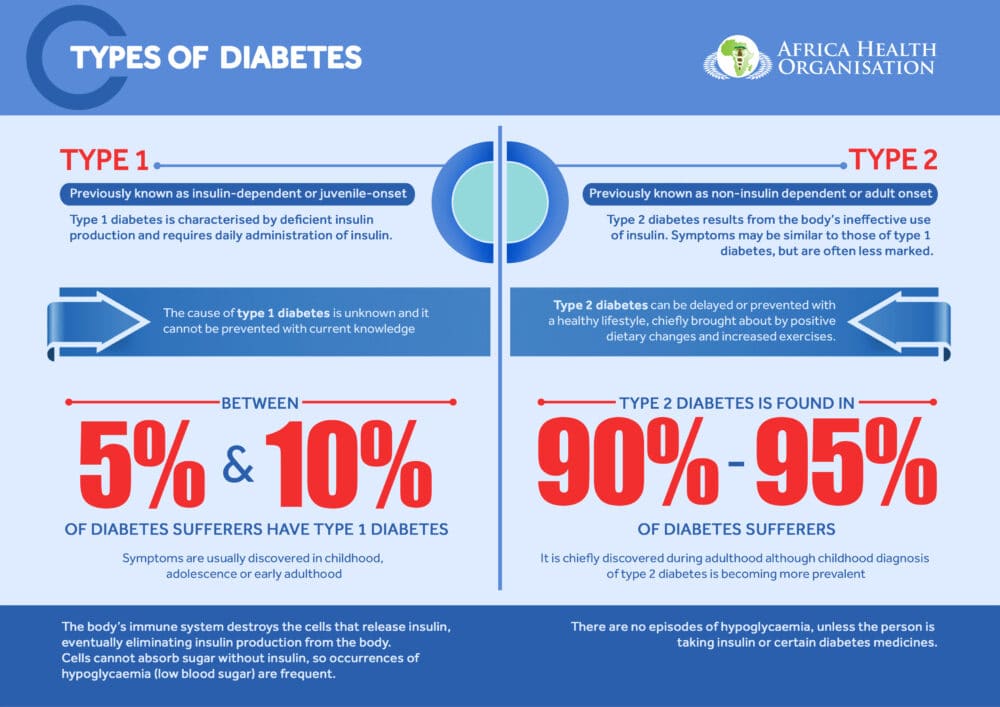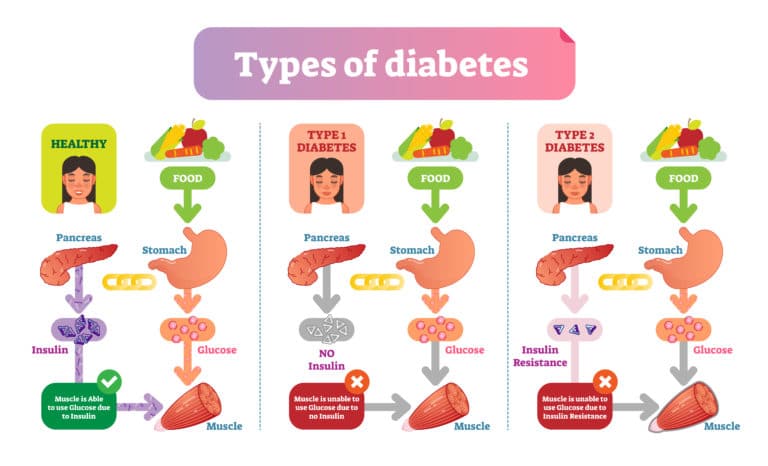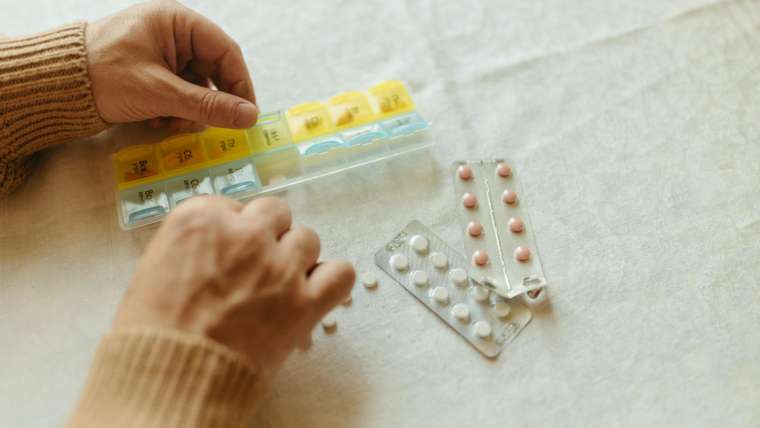Uncover the crucial signs that could indicate a Type 1 diabetes diagnosis, from subtle hints to more alarming symptoms.
Table of Contents
- Introduction: The Sneaky Signs of Type 1 Diabetes
- What is Type 1 Diabetes?
- How Does Type 1 Diabetes Affect Your Body?
- Warning Signs of Type 1 Diabetes
- Diagnosing Type 1 Diabetes
- The Importance of Insulin Therapy
- Living with Type 1 Diabetes: It’s Manageable!
- How Friends and Family Can Help
- Type 1 Diabetes: Myths vs. Facts
- Battling High Blood Sugar Like a Superhero
- Conclusion: You’re in the Know!
- Frequently Asked Questions (FAQs)
Introduction: The Sneaky Signs of Type 1 Diabetes
Hey there! Have you ever heard of type 1 diabetes? It’s a special kind of health condition known as an autoimmune disorder. But don’t worry, I’m here to help you understand what that means, and why it’s essential to recognize the sneaky signs of type 1 diabetes early on.
So, let’s jump right in and learn about these mysterious warning signals that your body might be sending you!
What is Type 1 Diabetes?
Type 1 diabetes is a condition that affects how your body uses glucose, or sugar, for energy. Unlike other types of diabetes, type 1 diabetes is classified as an autoimmune disorder. But, what does that mean?
Understanding Autoimmune Disorders
Let’s break it down. Normally, your immune system is like a superhero that protects your body from invaders like viruses and bacteria. But in autoimmune disorders, like type 1 diabetes, the immune system gets confused and starts attacking healthy cells by mistake. In the case of type 1 diabetes, the immune system targets the pancreas, which is the organ responsible for producing insulin – a hormone needed to regulate blood sugar levels.
How Does Type 1 Diabetes Affect Your Body?
When you have Type 1 diabetes, your body doesn’t make enough insulin. Insulin is like a key that helps glucose (sugar) from the food you eat get into your cells to give you energy. Here’s how it affects your body:

Image courtesy of aho.org via Google Images
The Battle with Blood Sugar
Normally, insulin helps control your blood sugar levels. But without enough insulin in your body, your blood sugar can get too high. High blood sugar is like having too much sugar in your body, which can make you feel sick.
When your body can’t use the sugar for energy, it tries to get rid of it by making you pee more. That’s why you might feel thirsty all the time and need to go to the bathroom a lot. High blood sugar can also make you feel tired and not as bright and energetic as usual.
Warning Signs of Type 1 Diabetes
When it comes to type 1 diabetes, being aware of the warning signs is crucial. Here are some common symptoms to look out for:
Thirsty Much?
One of the warning signs of type 1 diabetes is feeling constantly thirsty. When your body has high blood sugar levels, it tries to get rid of the excess sugar through frequent urination, which can leave you feeling dehydrated and in need of more fluids.
Frequent Trips to the Bathroom
If you find yourself making a lot more trips to the bathroom than usual, especially during the night, it could be a sign of type 1 diabetes. The excess sugar in your blood needs to be eliminated, leading to more frequent urination.
Tired as a Turtle
Feeling more tired than usual, even after a good night’s sleep, can also be an indication of type 1 diabetes. When your body doesn’t get enough sugar from your blood, it can leave you feeling fatigued and lacking energy.
It’s essential to recognize these warning signs early on and seek medical advice if you or someone you know experiences them. Catching type 1 diabetes early can help in managing the condition effectively.
Diagnosing Type 1 Diabetes
When it comes to diagnosing type 1 diabetes, doctors have specific methods to determine if someone has this condition. One essential tool in the diagnosis process is glucose monitoring.

Image courtesy of www.pinterest.com via Google Images
Visits to the Doctor’s Office
When you visit the doctor’s office because of concerns about diabetes, they will likely perform various tests to see if you have type 1 diabetes. One of these tests involves checking your blood sugar levels. This is where glucose monitoring comes into play.
The doctors may ask you to take a blood test, also known as a blood glucose test, to measure the amount of sugar in your blood. They might also want to check your urine for any signs that could indicate diabetes. These tests help the doctors understand how your body is handling sugar and if there are any warning signs of type 1 diabetes.
Based on the results of these tests, the doctors can make a diagnosis and create a plan to help manage your diabetes effectively. It’s essential to follow their guidance and attend regular check-ups to monitor your condition and ensure you stay healthy.
The Importance of Insulin Therapy
Insulin therapy is like a superhero for kids with type 1 diabetes. Let’s explore why it plays a vital role in managing this condition.
Keeping Blood Sugar Balanced
Insulin is a hormone that helps the body use glucose from food for energy. In type 1 diabetes, the body doesn’t produce enough insulin, leading to high blood sugar levels. That’s where insulin therapy swoops in to save the day!
Steady Blood Sugar Means Feeling Great
When kids with type 1 diabetes take insulin as prescribed, it helps keep their blood sugar levels stable. This means they have more energy, feel better, and can focus on having fun with friends and family.
Preventing Complications
By using insulin therapy correctly, kids can lower their risk of complications like heart disease, kidney issues, and vision problems that can arise from high blood sugar levels over time.
Insulin therapy truly is a lifesaver for kids with type 1 diabetes, helping them lead healthy and active lives.
Living with Type 1 Diabetes: It’s Manageable!
Living with type 1 diabetes might sound intimidating, but with the right care, it’s completely manageable. Kids with type 1 diabetes can lead a full and active life just like their friends, thanks to proper management techniques like a diabetic diet and insulin therapy.

Image courtesy of www.facebook.com via Google Images
Eating Right, Staying Bright
One essential element of managing type 1 diabetes is following a diabetic diet. This means being mindful of the foods you eat to help control blood sugar levels. By choosing healthy options like fruits, vegetables, whole grains, and lean proteins, kids can keep their diabetes in check and feel their best.
Learning About Insulin
Insulin therapy plays a crucial role in the management of type 1 diabetes. Insulin is a hormone that helps regulate blood sugar levels in the body. For children with type 1 diabetes, they may need to take insulin injections or use an insulin pump to mimic the body’s natural insulin production. Working closely with healthcare providers, kids can learn how to administer insulin properly to stay healthy and active.
How Friends and Family Can Help
When a friend or family member has type 1 diabetes, it’s important to offer them love and understanding. Sometimes, dealing with a chronic condition like diabetes can be overwhelming, so emotional support is vital. Let your friend know that you’re there for them and that you care about their well-being. A simple hug or kind words can go a long way in brightening their day.
| Warning Sign | Description |
|---|---|
| Extreme Thirst | Feeling very thirsty and drinking a lot of water even if you haven’t exercised or been in a hot environment |
| Frequent Urination | Urinating more often than usual, including waking up frequently during the night to urinate |
| Extreme Hunger | Constantly feeling hungry, even after eating |
| Unintended Weight Loss | Losing weight without trying, despite eating regular amounts of food |
| Fatigue | Feeling tired and weak, even with enough rest |
| Irritability | Feeling irritable or having mood changes without any apparent reason |
| Blurred Vision | Experiencing blurred vision or other changes in eyesight |
| Skin Problems | Having frequent infections, slow-healing cuts or bruises, or darkening of the skin in certain areas |
Type 1 Diabetes: Myths vs. Facts
There are many misconceptions surrounding type 1 diabetes. Let’s uncover the truth behind the myths and separate fact from fiction.

Image courtesy of www.wilsonmedicalwriting.com via Google Images
Myth: Only Overweight People Get Type 1 Diabetes
Fact: Type 1 diabetes has nothing to do with body weight. It is an autoimmune disorder where the body mistakenly attacks the cells in the pancreas that produce insulin. People of all shapes and sizes can develop type 1 diabetes.
Myth: Insulin Injections Are Painful and Unpleasant
Fact: While the idea of injecting insulin may seem scary, most people find that the process is relatively painless. Insulin injections are essential for managing blood sugar levels and are not as daunting as they may seem at first.
Myth: Type 1 Diabetes Is Contagious
Fact: Type 1 diabetes is not contagious. You cannot “catch” it from someone else like a cold or the flu. It is an autoimmune condition that develops due to a combination of genetic and environmental factors.
Myth: Kids with Type 1 Diabetes Can’t Participate in Sports or Activities
Fact: With proper management and care, children with type 1 diabetes can participate in sports and activities just like any other kids. It’s important to monitor blood sugar levels and make adjustments as needed to ensure they can stay active and healthy.
Myth: Eating Too Much Sugar Causes Type 1 Diabetes
Fact: Eating sugar does not cause type 1 diabetes. As mentioned earlier, the condition is an autoimmune disorder. While a healthy diet is important for overall health, sugar intake alone does not lead to the development of type 1 diabetes.
Battling High Blood Sugar Like a Superhero
Imagine you have a secret power that helps you fight off a sneaky enemy trying to harm your body. It’s like being a superhero, but instead of a cape, you have glucose monitoring and a healthy diabetic diet to keep high blood sugar levels in check. Let’s dive into how you can be a superhero in battling high blood sugar!
Superpower of Glucose Monitoring
Just like a superhero keeps an eye out for villains, monitoring your blood sugar levels lets you know if they are too high. With a tiny device called a glucose meter, you can check your blood sugar quickly and easily. By using this superpower regularly, you can stay ahead of any spikes in blood sugar and make the right choices to keep it under control.
Fueling Your Superpowers with the Right Diet
Even superheroes need the right fuel to power through their adventures. For kids with type 1 diabetes, following a diabetic diet is like having a secret weapon against high blood sugar. Foods like fruits, vegetables, whole grains, and lean proteins can help you keep your blood sugar levels steady and maintain your energy levels throughout the day. Make sure to work with your healthcare team to create a meal plan that works best for you!
Remember, managing high blood sugar levels is like having special superpowers that you can use every day to keep diabetes at bay. With glucose monitoring and a healthy diet, you can be the superhero of your own story, fighting off high blood sugar like a true champion!
Conclusion: You’re in the Know!
Throughout this article, we’ve delved into the world of type 1 diabetes and the essential information you need to be aware of. By understanding the sneaky signs, knowing how type 1 diabetes affects your body, recognizing warning signs, undergoing diagnosis processes, grasping the importance of insulin therapy and a diabetic diet, and having the support of friends and family, you are equipped to navigate the challenges of living with type 1 diabetes.

Image courtesy of www.lifelinescreening.com via Google Images
Remember, knowledge is power when it comes to managing your health. By staying informed and proactive, you can lead a fulfilling life while effectively managing type 1 diabetes. Your commitment to monitoring your blood sugar levels, following a diabetic diet, and working with your healthcare team will enable you to stay healthy and active. With the right tools and support, you have everything you need to face type 1 diabetes head-on.
Frequently Asked Questions (FAQs)
Here are some questions that kids or their guardians might have about type 1 diabetes, its management, and daily life:
Type 1 Diabetes
Q: What exactly is type 1 diabetes?
A: Type 1 diabetes is a condition where your body’s immune system attacks the cells in the pancreas that make insulin, a hormone that regulates blood sugar levels.
High Blood Sugar
Q: Why is high blood sugar a concern for people with type 1 diabetes?
A: High blood sugar can cause a variety of symptoms like increased thirst, frequent urination, fatigue, and even more serious complications if left untreated.
Insulin Therapy
Q: Why is insulin therapy important for managing type 1 diabetes?
A: Insulin therapy helps replace the insulin that the body no longer produces, allowing people with type 1 diabetes to regulate their blood sugar levels and stay healthy.
Diabetic Diet
Q: How does following a diabetic diet help kids with type 1 diabetes?
A: A diabetic diet focuses on balancing carbohydrates, proteins, and fats to help control blood sugar levels, giving kids with diabetes the energy they need without causing spikes or drops in blood sugar.
Glucose Monitoring
Q: What is glucose monitoring, and why is it important for kids with type 1 diabetes?
A: Glucose monitoring involves regularly checking blood sugar levels to make sure they stay within a healthy range. It helps kids and their families adjust their diet, insulin dose, and activities to keep blood sugar levels stable.





